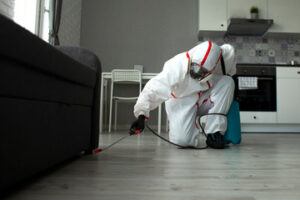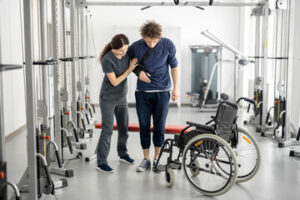Pests are organisms that damage or spoil food, buildings or living things. They can carry disease-causing pathogens, damage goods and structures, and degrade crops.

Learn to recognize and control the most common household pests. Start with prevention – reducing the amount of food and water available for pests. Use traps and barriers to prevent access. Contact Pest Control Malibu for professional help.
Preventing pests is a key part of pest control. This includes steps like identifying what type of pest you have, and learning as much as you can about it (for example, its life cycle, needs, dislikes). It also means not relying on sprays or other chemicals unless absolutely necessary, and only then using them sparingly and in a targeted way to avoid harming pets or children.
Effective structural prevention is also a key part of preventive pest control, and involves making it difficult for pests to get inside buildings through things like caulking cracks, repairing holes, and removing potential entry points such as loose screens and vents. This is especially important in food establishments, where the presence of pests can shut down a business until the problem is addressed.
Regular cleaning and sanitization also helps keep pest populations low, as it removes food sources and hiding places. This is particularly important in kitchens and dining areas, where pests can spread disease through their droppings or saliva. Pests can carry and spread pathogens such as Salmonella, E.coli, Listeria, and Hantavirus, which can all cause serious illness in people, and some of these can be transmitted through contaminated food.
Lastly, pests often live in close association with humans, so it’s often hard to tell when a particular human is at risk of being affected by them. This is where proper identification can come in handy, and why it’s a good idea to contact Museums Victoria’s pest identification service.
There are also some actions you can take to make your property less welcoming to pests, by eliminating the things they need to survive. These include reducing the amount of waste you have lying around, which provides nesting sites; and keeping clutter to a minimum, as this gives pests more places to hide. It’s also important to check that all doors and windows are closed, and that any leaking pipes are promptly repaired. If you have a pest infestation, it’s important to act quickly and to call your local pest control operator for advice. Be sure to report the time and location of any sightings or indications of a pest problem, as this will help them be more efficient in their work.
Suppression
A pest is an organism that causes economic or environmental damage in large enough numbers to warrant intervention. They can cause physical contamination of food products with rodent droppings, insect parts or other debris, or they can introduce disease-causing organisms, such as bacterial pathogens and intestinal worms. Pests can also disrupt natural habitats, destroy buildings or their contents, and displace desirable organisms.
The goals of pest control are usually prevention and suppression, not eradication. Eradication is rarely possible in outdoor settings, because the actions of a single species usually affect the actions and well-being of many other organisms sharing that environment. However, eradication is a common goal for indoor environments, including dwellings; schools, offices and health care facilities; and food processing and storage areas.
Steps to prevent pest infestations include making the environment unfavourable by removing food, water and shelter, blocking access, and sanitation: removing crumbs and spills; fixing leaky plumbing; and securing trash cans. Monitoring pest populations and the conditions that favour them can help identify when action is needed. For example, observing a few wasps visiting a garden now and then doesn’t normally warrant the use of traps. But seeing them in increasing numbers every day may indicate that it’s time to act.
When preventive measures fail or are impractical, chemical controls can be used. These are generally broad-spectrum or narrow-spectrum chemicals in the form of powders, granules, liquids or sprays. They can kill or deter pests directly, or they can modify the behaviour of targeted organisms, by releasing hormones that change the reproductive cycle, for example, or inhibiting an insect’s ability to feed by releasing nerve toxins.
Some of these chemicals are toxic to humans and other non-target organisms, or they can persist in the environment, affecting water quality, soil productivity and air quality. As an alternative to chemical pest control, a range of biological and cultural controls are available. Biological controls involve the release of natural enemies to injure or consume pests, parasitoids to parasitize pests, and methods that alter the biological characteristics of pests, such as using juvenile hormones to delay adult emergence.
Eradication
Eradication is the permanent reduction to zero worldwide incidence of infection caused by a specific agent as a result of deliberate efforts (for example, smallpox). It differs from control in that eradication is expected to be permanent. This is possible only if the intervention-altered reproductive rate of the microbe is maintained below 1.0 and all known reservoirs are controlled. Eradication is only one component of a comprehensive pest management program and is not appropriate for every situation.
Preventive steps are economical and environmentally responsible methods that reduce or eliminate conditions that promote pest infestations. Frequently cleaning areas where pests are likely to live prevents their establishment. Quickly applying control measures while the pest population is low suppresses it.
Suppression methods are those that restrict pest activity and populations in the presence of existing infestations, and typically occur at a building or home landscape scale. Biological control is a suppression method that relies on natural enemies of the pest, such as parasites or predators. It can be supplemented by releasing more of the pest’s enemies or by genetically altering the organism, as in the production and release of large numbers of sterile males or the use of pheromones.
Chemical pest control includes herbicides, insecticides, fungicides and other chemicals that kill or damage the targeted pests. These chemicals are often used on crops to protect them from unwanted organisms that can reduce yield or contaminate the crop. They are also used in homes and businesses to control rodents, cockroaches, mosquitoes and other pests. The toxicity of these chemicals, which can also affect non-target plants and animals, varies by product and application.
Food manufacturers often employ their own pest control teams or contract this service to a company that specializes in food safety pest control. These companies will develop a plan for prevention of pests that includes non-chemical options before considering chemical treatments. These may include trapping, baiting and exclusion. In the event that a pest infestation is discovered, it’s important to take action as quickly as possible to ensure the food supply remains safe and secure. Inspect food and other supplies regularly for signs of pests, such as mouse pellets, flies or cockroaches, or for a musty, oily odor that could indicate the presence of disease-carrying microbes.
Biological Control
Biological control uses natural enemies—predators, parasitoids and disease organisms—to reduce pest populations and make them less damaging. It is usually used along with other management strategies. Proper identification of the pest to be controlled (usually down to the species) is important for deciding which natural enemy to use. Natural enemies are generally specific to the pests they attack, and can only be introduced into an area where the pest exists.
Several different kinds of natural enemies can be used for biological control, including viruses, bacteria and fungi. Bacillus thuringiensis, a bacterium that produces a toxin that kills caterpillars, is one of the most commonly used biological control agents. Other bacterium-based products target mosquitoes and Lepidopteran pests, while fungi can be used against a wide variety of insects and other pests.
Some of the most common natural enemies are predators, which feed on the pests and can quickly reduce their numbers. Parasitoids, which kill the pests by infesting them with disease, are also useful. Some parasitoids have special structures that penetrate the cuticle of their host and kill it from within. Fungi, which also kill the pests by releasing a toxin, are another common parasitoid.
A form of biological control called classical biological control involves introducing natural enemies from the pest’s native country or region into an area where they are not present. This can be expensive, and requires the careful monitoring of the environment to ensure that unwanted natural enemies do not establish themselves. Other forms of biological control are more affordable, but do not have the long-term benefit of classical biological control.
Steps to prevent pest problems can include scouting—regularly searching for, identifying and assessing pest populations and the damage they cause. This is the best way to detect pests before they reach problem levels. Preventive measures may also involve using pheromones—insect pheromones that confuse males or attract females to a trap—to interfere with mating. Other tools can include introducing beneficial insects, such as ladybugs or wasps, into areas to suppress pest populations or using juvenile hormones to keep immature pests from maturing into adult pests.
